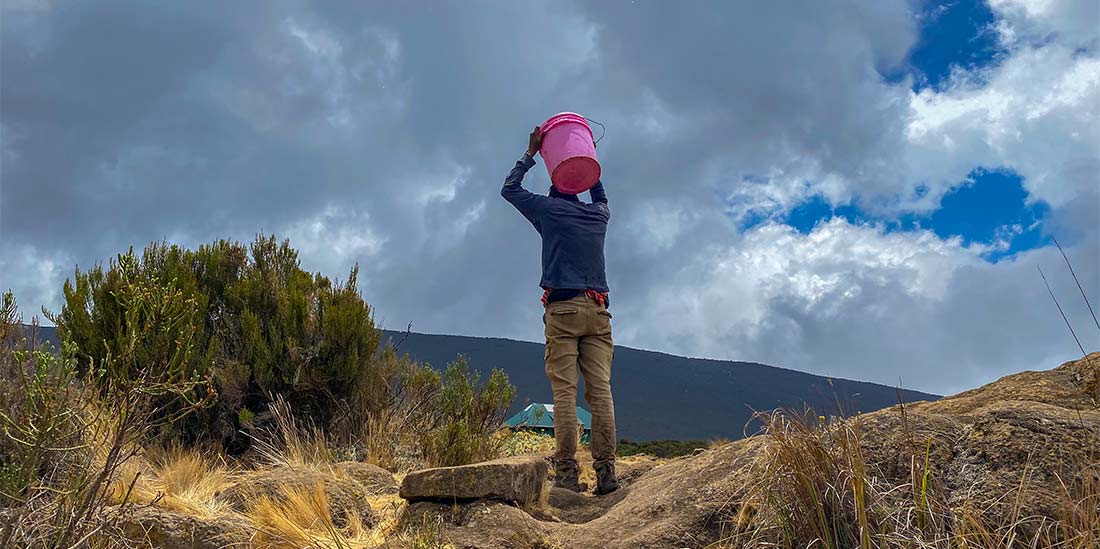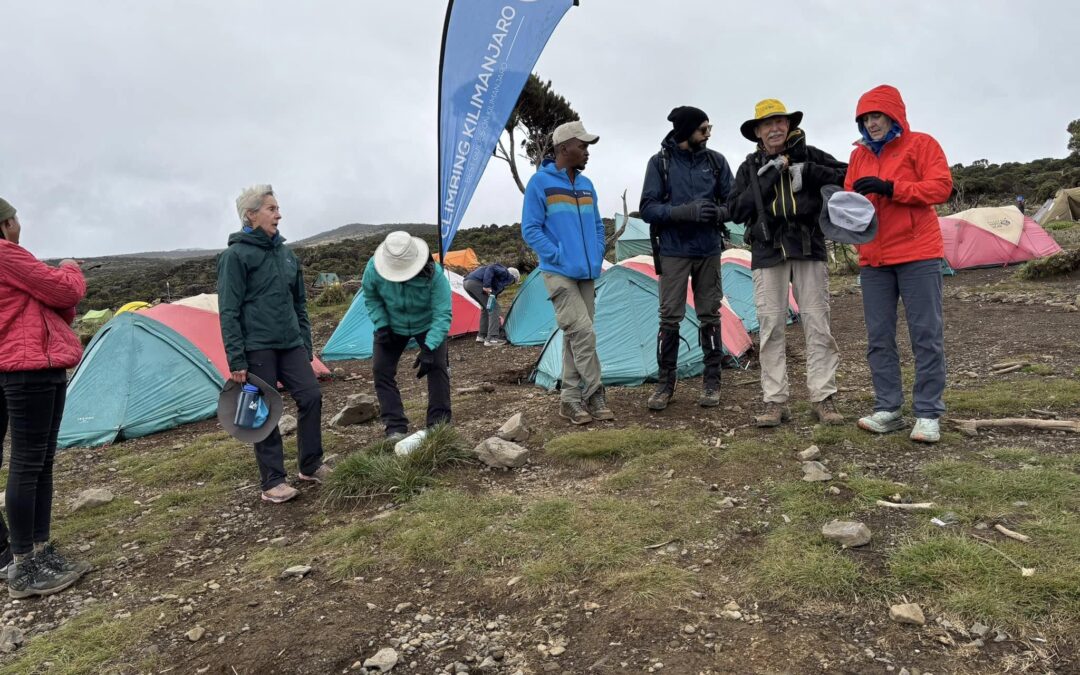As climbers ascend Mount Kilimanjaro, hydration needs fluctuate dramatically with each altitude change. At lower elevations, the human body requires less water, but as hikers climb higher, their water intake must almost double to combat increased exertion. This unique challenge makes understanding the Kilimanjaro water intake strategy crucial for a successful summit.
Research shows that climbers can need up to 5 liters of water daily at higher altitudes due to thinner air and increased respiration rates. Historically, many expeditions have failed due to dehydration and related complications. Developing a precise water intake strategy has become pivotal for the health and success of every mountaineer tackling Kilimanjaro’s heights.

Hydration Needs at Various Altitudes on Kilimanjaro
Hydration is crucial when climbing Mount Kilimanjaro. At lower altitudes, hikers typically need around 2-3 liters of water per day. But as you climb higher, the air gets thinner, and hydration needs increase significantly. According to the article, climbers may require up to 5 liters of water per day at higher elevations. This jump in water intake helps combat the effects of altitude sickness.
The change in hydration requirements is due to reduced oxygen levels and increased energy exertion. When you climb, your body works harder, causing more sweat and water loss. Drinking enough water helps maintain energy and keeps you alert, which is vital for safety. You can find more details about hydration practices here in this post.
Dehydration can lead to serious health issues on Kilimanjaro. Symptoms may include headaches, nausea, and dizziness. It’s essential to monitor your fluid intake closely. Make sure to drink small amounts frequently instead of large amounts all at once. This strategy can help prevent overwhelming your system.
Rashad Adventures always recommends carrying a hydration pack. These packs make it easier to sip water regularly while hiking. Besides, following a planned hydration strategy tailored to various altitudes can enhance your climbing experience. Ready to conquer Kilimanjaro? Remember, staying hydrated is key!
Understanding Water Requirements from Base to Peak
When starting at the base of Mount Kilimanjaro, your water needs are relatively moderate. At this altitude, you’ll need about 2-3 liters daily to stay hydrated. As you ascend, the air becomes thinner, leading to an increase in your water requirements. According to experts, reaching the higher camps means your intake should increase to maintain performance and health. This helps you adjust to the changing environment more effectively.
Climbers often don’t realize their bodies lose more water at high altitudes. This loss is due to increased respiration rates, as you breathe faster in thin air. Consequently, you need to replace fluids more frequently to avoid dehydration. Drinking ample water also aids in acclimatization, reducing the chances of altitude sickness. You can learn more about managing hydration during climbs from various resources.
- Base: 2-3 liters per day
- Mid-Altitude: 3-4 liters per day
- High Altitude: 4-5 liters per day
Regularly monitoring and adjusting your water intake as you move up can make a huge difference. Consistent hydration helps your body adapt and keeps you feeling energized throughout the climb.
Another key point is to spread your water intake throughout the day. Sipping water regularly rather than consuming large amounts at once is beneficial. This strategy helps your body absorb fluids more efficiently. Rashad Adventures recommends carrying a refillable water bottle with measurement markings, making it easier to track your intake. Ready for the climb? Aim to keep hydrated and healthy as you journey from base to peak.
The Role of Altitude in Water Absorption and Loss
Altitude plays a significant role in how your body absorbs and loses water. At lower altitudes, your body can efficiently process and retain fluids. However, as you climb higher, the thinner air and lower pressure affect your body’s ability to hold onto water. This change can lead to increased dehydration if not properly managed. Therefore, understanding these changes is crucial for a successful climb.
At higher altitudes, the decrease in oxygen levels causes you to breathe more rapidly, leading to more water loss through respiration. Additionally, sweat evaporates faster in the thin air, making hydration trickier. According to studies, your body’s need for water can significantly increase at elevations above 12,000 feet. This means you have to be extra vigilant about replacing lost fluids. Keeping tabs on symptoms like dry mouth can alert you to early dehydration.
Staying hydrated at high altitudes also aids in maintaining energy levels and reducing fatigue. Dehydration can make you feel more tired and sluggish, impeding your climb. A consistent intake of water helps your cells function efficiently and combats these effects. Monitoring your hydration and adjusting as needed keeps you focused and healthy.
Here’s a quick overview of how water absorption and loss are impacted by altitude:
- Low Altitude: Efficient water processing
- Mid Altitude: Increased respiratory water loss
- High Altitude: Rapid dehydration through sweat and breath
Rashad Adventures suggests using electrolyte-enhanced drinks to optimize hydration. This helps your body retain water and essential minerals. Remember, at high altitudes, every sip counts.
Recommended Daily Water Intake for Climbing Kilimanjaro
When planning to climb Kilimanjaro, knowing your daily water intake is essential. At the start of your journey, you might need around 2-3 liters of water a day. This amount is enough to keep you hydrated at the lower altitudes. However, this need increases as you ascend. It’s not just the physical effort; the change in air pressure and temperature plays a huge role.
As you get higher, your body’s water needs can jump to 4-5 liters per day. This helps in combating the effects of altitude sickness and keeps your energy levels up. Most climbers don’t realize how easy it is to become dehydrated in cold and windy conditions. Following a structured water intake plan can help. Rashad Adventures always emphasizes this to ensure hikers have a safe trip.
Walking through different altitudes affects your body differently. Here’s a handy guide:
- Up to 8,000 feet: 2-3 liters per day
- 8,000-12,000 feet: 3-4 liters per day
- Above 12,000 feet: 4-5 liters per day
Sticking to these recommendations can make your climb more enjoyable.
Drinking water regularly is more effective than gulping down large amounts infrequently. Sipping throughout the day ensures better absorption and less bloating. Always carry a reusable water bottle that you can fill up at various stops. Many climbers use hydration packs, which make it easier to sip while hiking.
Electrolyte drinks can also be beneficial. They help replenish the minerals lost through sweat. According to experts, a mix of water and electrolyte drinks can keep you balanced. Remember, the key is consistency. Keeping hydrated throughout your climb will make for a safer and more enjoyable experience.


Recent Comments